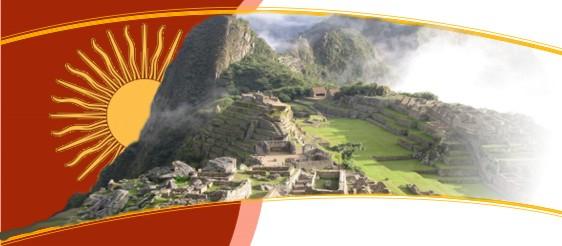|
Continuing south
on the Pan American highway is Pisco, a port city that gave its name to the clear white
grape alcohol used in Peru's national drink, the pisco sour.
The invention of pisco was actually a mistake by Spaniards trying to introduce
grapes and wine production into the dry coastal area of the New World. However, once they
tried this potent, yet smooth, beverage they decided it had merit of its own.
A pisco sour is a
cocktail made from pisco, lemon juice, egg white and sugar syrup, whipped and served with
a dash of Angostura bitters.
The city, now with 80,000 inhabitants, joined the bandwagon
when revolutionary fever overtook the continent in the early 1800s. Half a block from the
town's Plaza de Armas is the Club Social Pisco used as the headquartersfor liberation
leader General Jose de San Martin while he was fighting the Spaniards.
Travel Green with this
Peru Ecotourism
Packages
A statue to this Argentine hero of the independence war is
found on the main plaza - the same square where boat trips to the Ballestas Islands can be
arranged. Originally, Pisco stood in another spot not far away. But an earthquake in 1687
and subsequent pirate attacks badly darn_ aged the structures in the city, prompting the
viceroy, Count de la Monclova, to order it moved. Construction of the opulent baroque
cathedral started shortly thereafter, only ending in 1723.
Pisco's small airport serves as the emergency landing strip
when heavy fog prevents planes from descending in Lima; passengers are then bused to the
Peruvian capital or wait until the weather clears before flying north again. From 1960 to
1970, small propeller planes of the foreign-owned Consorcio Ballenero buzzed the waters
offshore in a now defunct project to localize and count groups of whales that regularly
ply Peru's coast.
Then, in late 1988, Peruvian scientists, in conjunction with
experts from the Natural History Museum at the Smithsonian Institute in the United States,
announced the appearance of a new whale species. Named the Mesoplodon Peruvianus, one of
these mammals was inadvertently picked up by fishermen working the waters between Pucusana
and Pisco. The 4-meter (13foot) long whale is one of the smallest members of the whale
family.
The best trail to hike in this
Peru Hiking Tours
Poor man's Galapagos: Some 5 km (9 miles) down the coast from
Pisco is the Bay of Paracas, named after the Paracas winds - blustery sand storms that
sweep the coast. Transformed into an ecologically-delicate national park, and a popular
spot for New Year's Day camping, Paracas is a wildlife reserve boasting a wide variety of
sea mammals and exotic birds, among them the red and white flamingos that allegedly
inspired hero General San Martin to design the red and white independence flag for Peru.
The beach is lovely, although craggy for swimming and the
waters contain jellyfish. A monument marks where San Martin set foot in Peru on September
8, 1820 after liberating Argentina. (A law passed by the National Congress makes September
8 a provincial holiday.)
Not long after the Argentine's arrival, a shipload of British
troops under the command of Lord Cochrane dropped anchor in the same bay and headed to
shore to help San Martin plan his strategy against the Spanish. The British motivation was
to break Spain's monopoly on trade in the region.
The famous Candelabro, a candelabra-shaped drawing scratched
on to the highest point of a cliffside overlooking the bay, can be seen from the beach
although it is best viewed from a boat. Some scientists link the drawing to the Southern
Cross constellation; others say it is actually a stylized drawing of a cactus - a symbol
of power from the Chavin culture, which flourished farther north but whose influence has
been found great distances from its seat of power. The magic associated with the cactus is
related to its hallucinogenic powers and use by high priests in ancient Indian cultures.
On lucky days, a look skyward is rewarded by the sight of a
pair of condors soaring above. These majestic birds sweep down on sea lion carcasses, then
use the intense coastal winds to wing themselves up to the high altitudes they normally
frequent. So well-known was the Andean birds' presence at Paracas that, when the nature
reserve was being named, one scientist pushed for the moniker "Parque Nacional de los
Condores" (Condor National Park).
Want to get the best expirence in traveling,
then try this
Peru Luxury Travel
During the last century, this region was important for its
guano - mineralrich bird droppings used as fertilizers in Europe. Extensive exploration of
the peninsula is best done with the help of a guide as paths are not clearly marked and it
is easy to become lost. In June and August, Paracas is foggy - a reaction to the heat and
extremely sparse precipitation combined with the water-laden ocean winds that caress the
coast. A meteorological office here recorded only 36.7 mm (11/2 inches) of precipitation
during a 20-year period.
|
